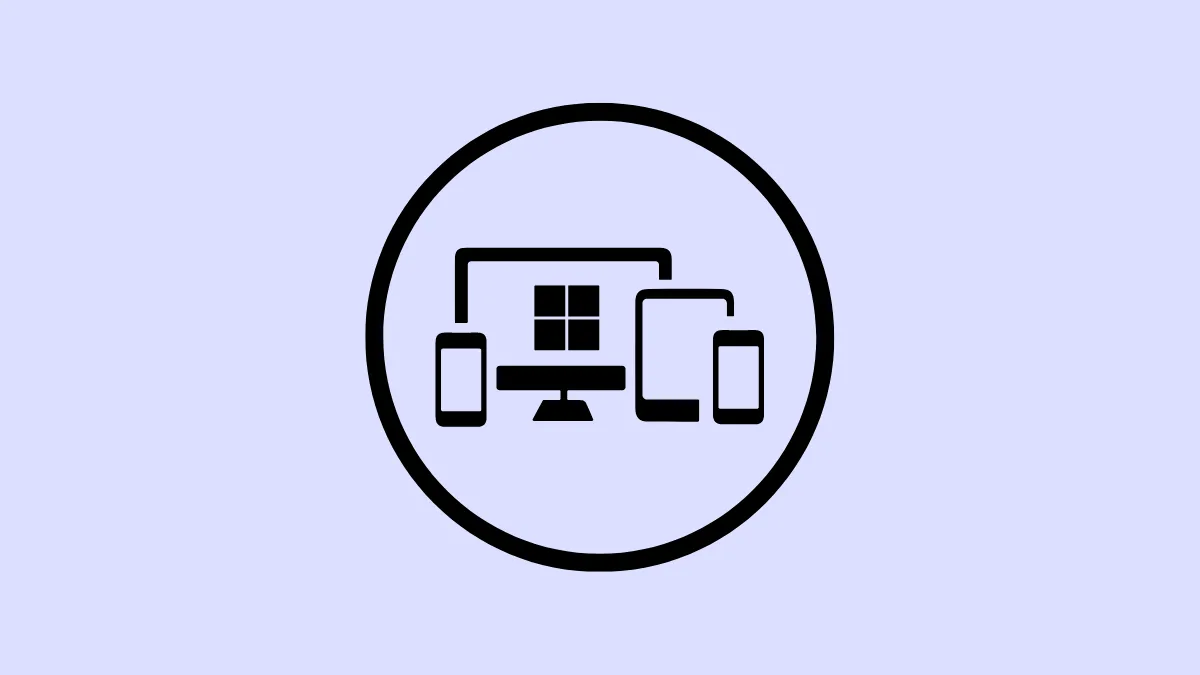For Windows users, managing their Apple Devices can be confusing with the iTunes app, especially for new users, since the app takes on so many functionalities. Users have also complained in the past about the need for better apps on Windows for Apple Music, Apple TV, etc.
To better streamline things, Apple finally announced that it will split the iTunes app for Windows into three different apps: Apple Music, Apple TV, and Apple Devices.
The Apple Devices app is the one that lets you manage your devices like iPhone, iPad, iPod, and iPod Touch from your Windows PC. It's basically a replacement of the iTunes app going forward, along with the other two apps. You can sync your photos (if you're not using iCloud), files, music, movies, etc., between your Apple Device and Windows PC. You can also use your PC to update, backup, and restore your device with the app.
Install and Setup the Apple Devices App on Windows
- First, you need to install the app from the Microsoft Store on your Windows PC. The app is compatible with Windows 10 version 19045.0 or higher. Click the link for the app or search for it in the Microsoft Store.
- Then, click the 'Get' button to install the app on your PC.
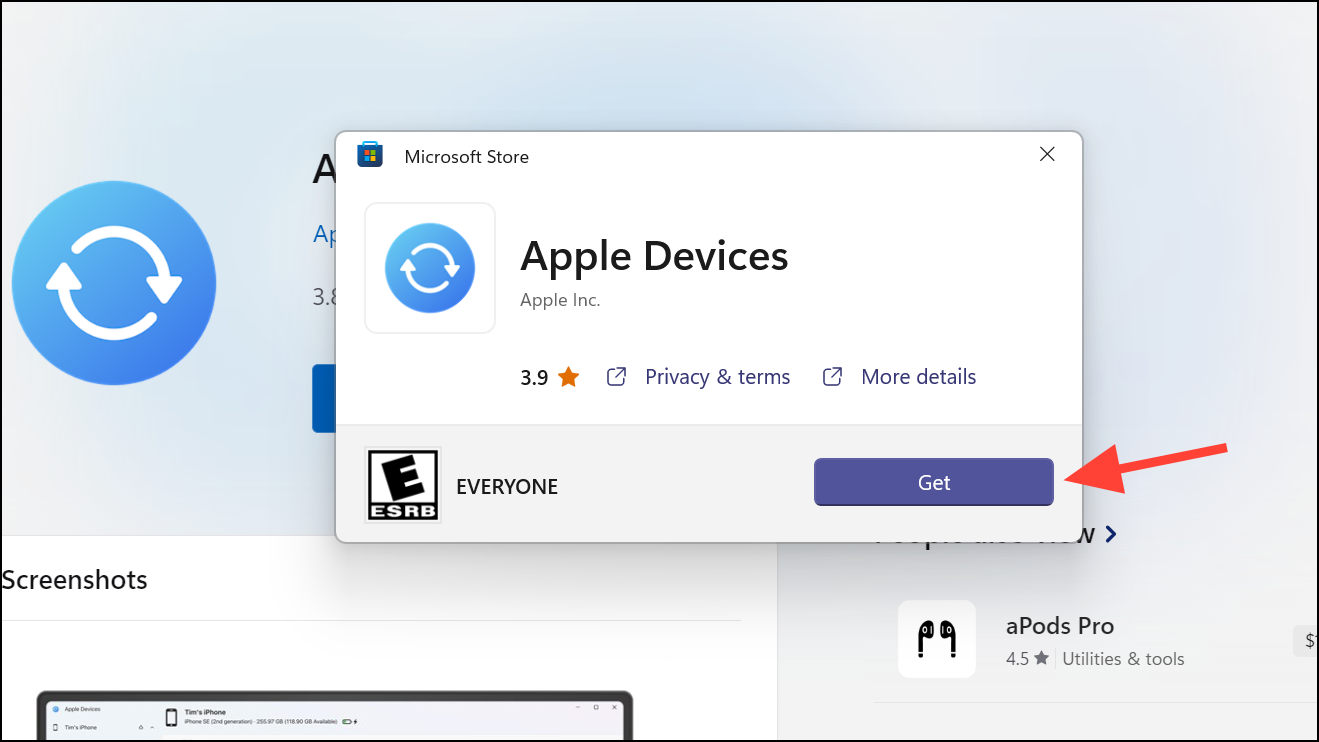
- Open the app, agree with the terms and conditions, and click on 'Start' to get started.
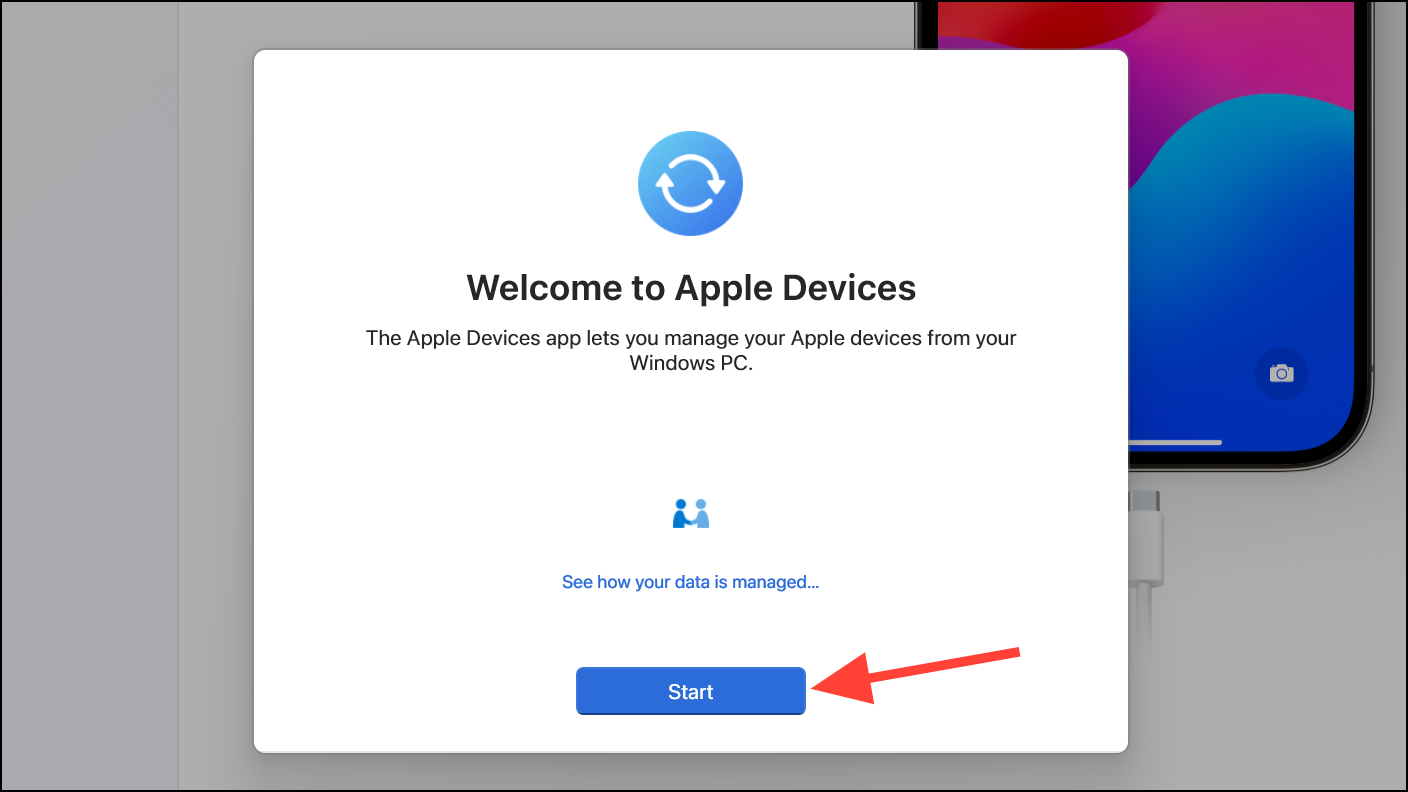
- Then, connect your device, like an iPhone, iPad, iPod, or iPod Touch using a USB cable to your PC to get started.

- Once your iPhone is connected, you might get the option to 'Trust this computer' if you haven't trusted it before or in a long time.
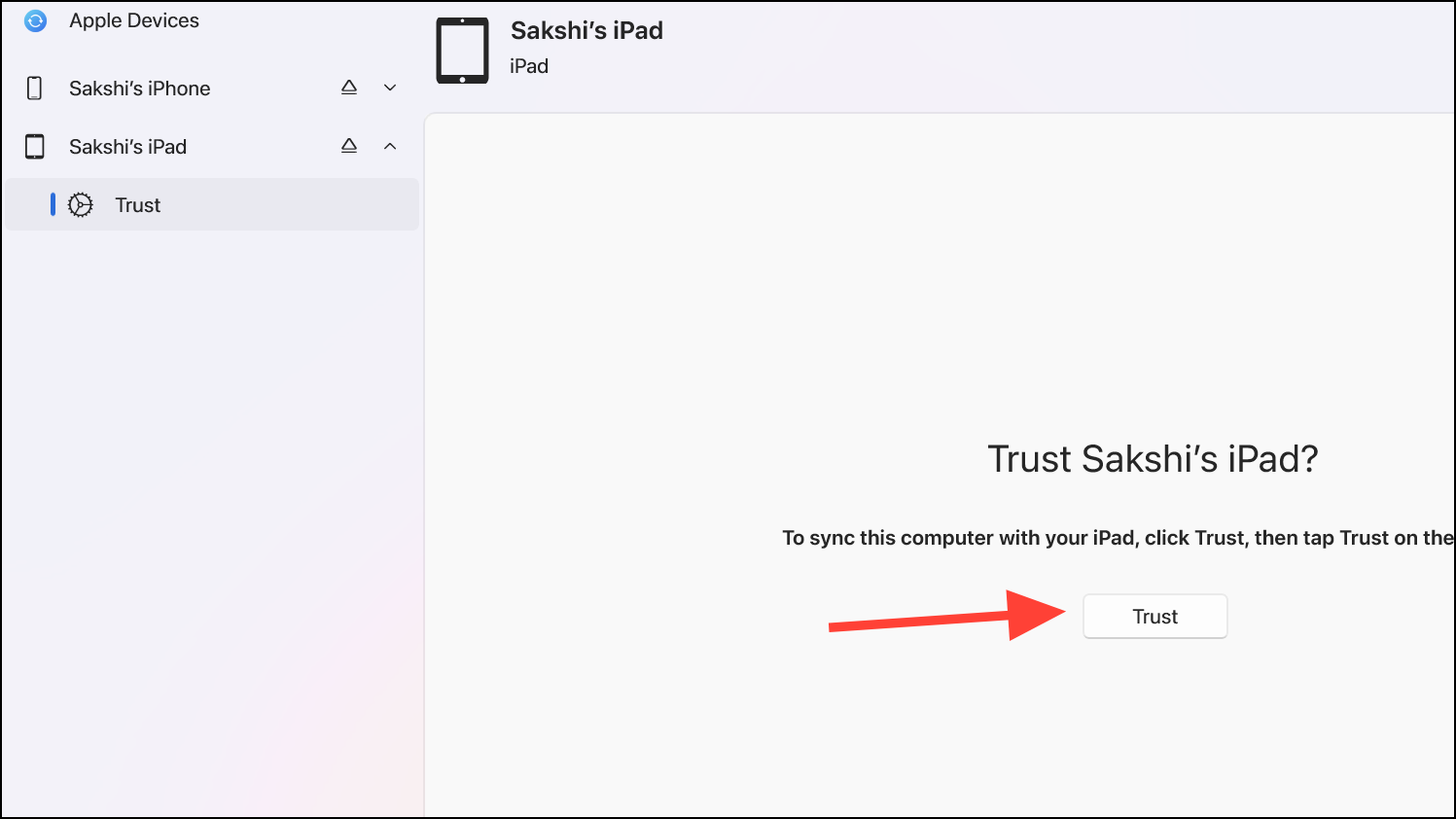
- Tap on the 'Trust' button from the prompt on your Apple Device and enter your device's passcode on the screen to proceed with using it with the app on Windows.
Use the Apple Devices App on Windows
Now, you can start managing your device with the app right away. Unlike the iTunes app, you don't need to sign into your Apple account. The interface is largely similar to that of iTunes, so it's easy to adapt to the new app if you were an iTunes user.
- Click on the device's name to expand the settings for it (if you have more than one connected).

- On the left, you can find the options to manage different aspects of your device. You can find more details about your device, like its name, model, memory, etc. on the top of the right pane.
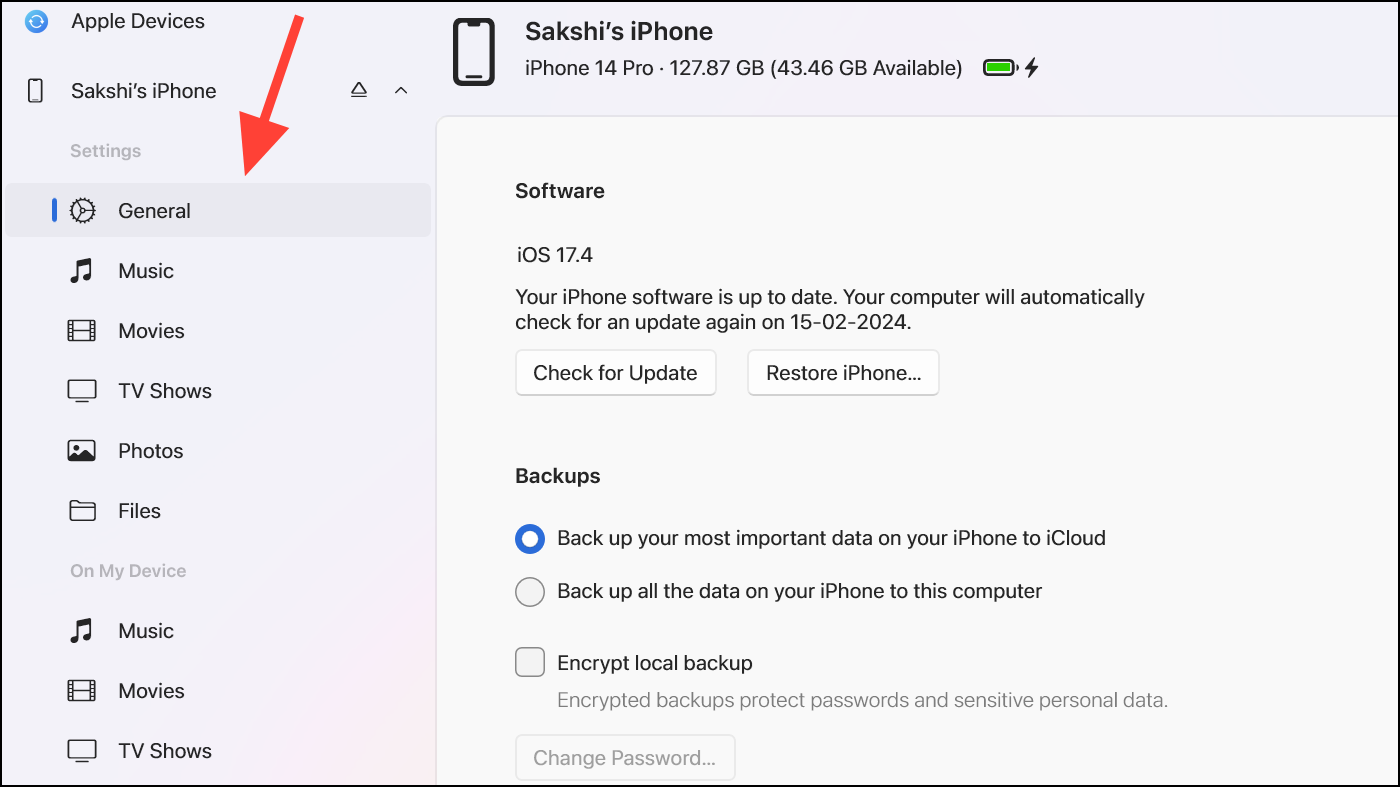
- You can find the options to update your device or take backups under the 'General' settings.
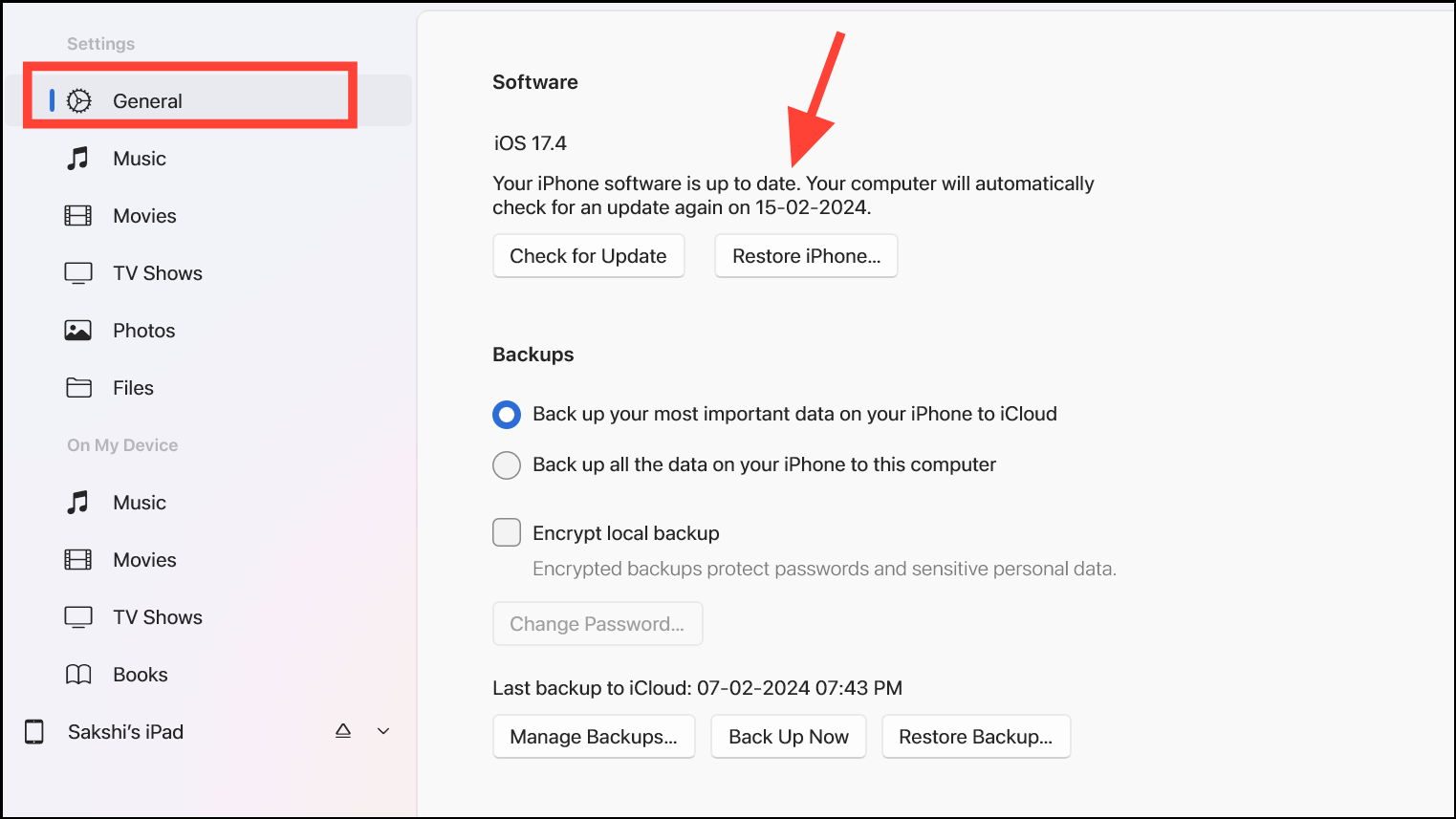
- To sync your music or movies, if you have an Apple Music or Apple TV+ subscription, you'll need to download the Apple Music and Apple TV apps. Even though there are options for Music and Movies in the Apple Devices app, there are no real options to access your music or movies in the app even after you install the other two apps. It says the particular app is not installed even after installing it.

- If you're not using iCloud Photos, you can sync photos from your device to your PC by going to the 'Photos' option.
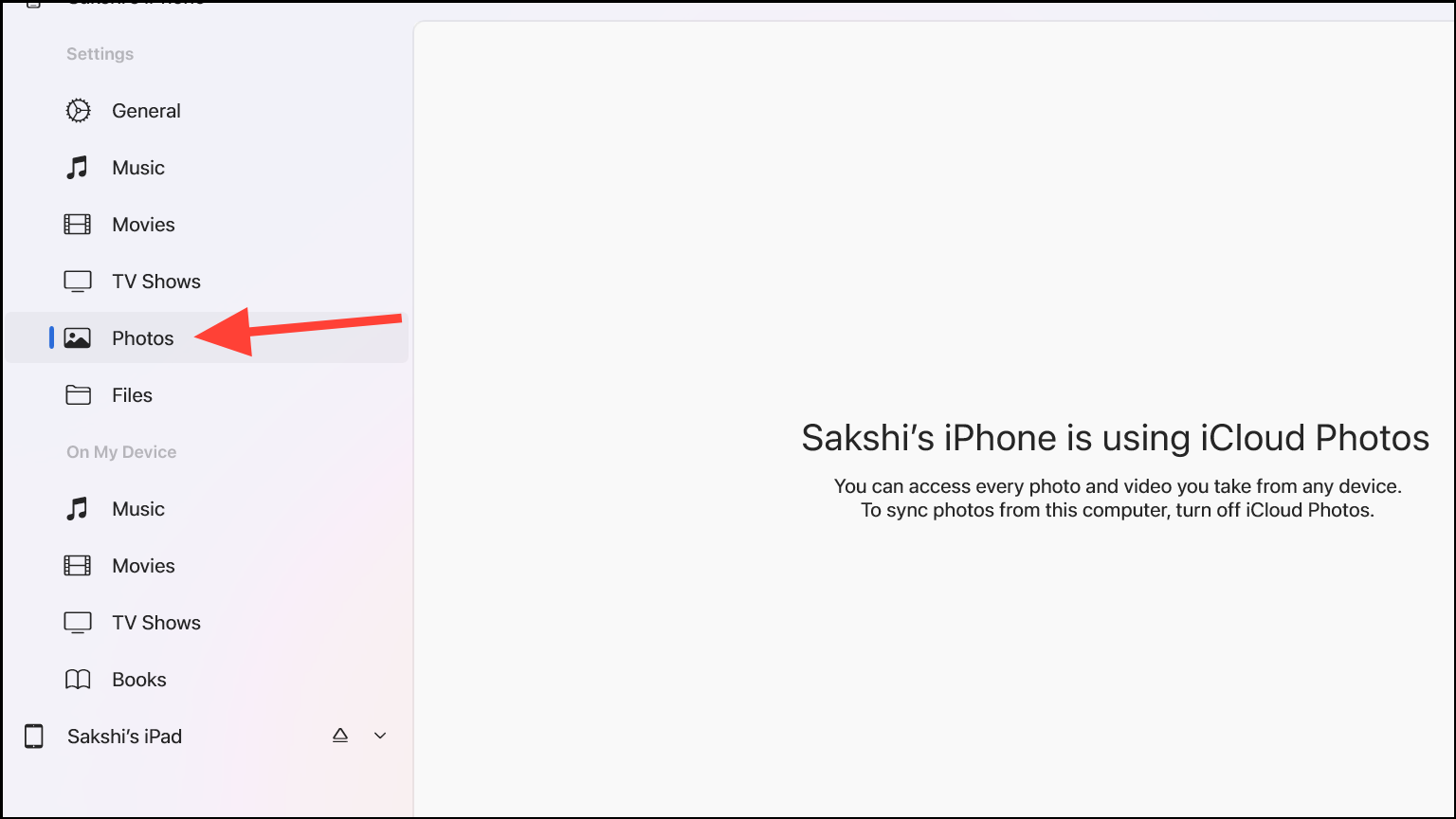
- You can access available files from your installed app on your PC by going to the 'Files' option.
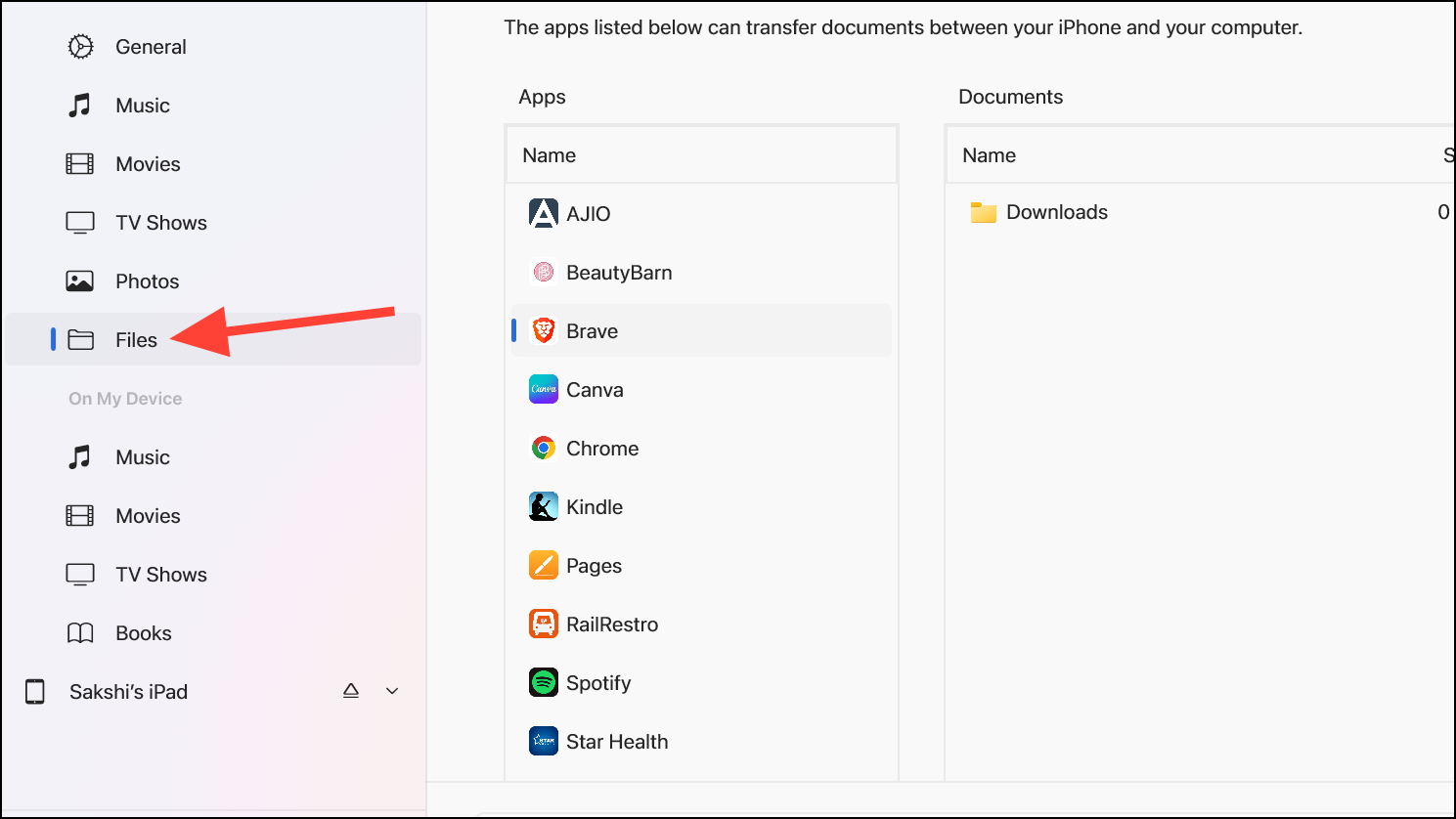
- In the second section, you can access any music, movies, TV shows, or books stored on your device.

There's no option to access your podcasts or audiobooks using any of the new apps; you'll need to use iTunes for that.
The new Apple Devices app has fewer options when compared to iTunes. For example, there's no option for syncing your device over Wi-Fi in the Apple Devices app. If you want the older functionality in iTunes, you'll need to uninstall the new apps and go back to the previous version of the iTunes app.
The introduction of the Apple Devices app marks a significant shift for Windows users who manage Apple products. By separating the iTunes functionalities into three distinct apps, Apple aims to streamline the user experience.

